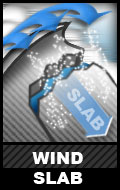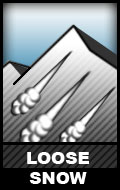Avalanche Concerns
While the weather has been quiescent and avalanche concerns on the decline, persistent weak layers (depth hoar and advanced facets near the ground, facet-crust combos, and buried surface hoar) remain in the snowpack across Chugach State Park. Associated avalanche dangers are some of the more difficult to thoroughly and accurately assess, especially considering the dramatic degree of spatial variability in the Chugach State Park snowpack. This spatial variability is even more compounded by thin, early season conditions.
Avoiding steep, upper elevation start zones and avalanche terrain above terrain traps would be prudent. Safely traveling in consequential avalanche terrain in current conditions will require advanced level avalanche assessment skills.
Smaller wind slabs may still prove reactive in wind loaded upper elevation terrain (above 3000′ along ridges and near peaks) and cross-loaded mid elevation (2000-3000′ gully side walls) terrain. Keep in mind that while these wind slabs may be small they can still be dangerous above exposed, consequential terrain or terrain traps and may also have the ability to “step down” and trigger a deeper, more inherently dangerous persistent slab as they descend.
Loose dry avalanches, or sluffs, may be possible in steep, upper elevation, wind-sheltered terrain. While they’ll be small and low volume, keep exposure and the consequences of a fall or loss of control in mind.
In general:
Practice good travel habits in avalanche terrain and always be on the lookout for red flags!
Educate yourself, gain experience, and conduct your own assessment of conditions!
Further info:
Check out the January 3 & January 5 observations from the South Fork Eagle River valley for info on a D2 (could bury, injure, or kill a person) human triggered avalanche in the northern advisory area.
Check out the January 2 observation from Canyon Road for info on what we found in the southern advisory area.



